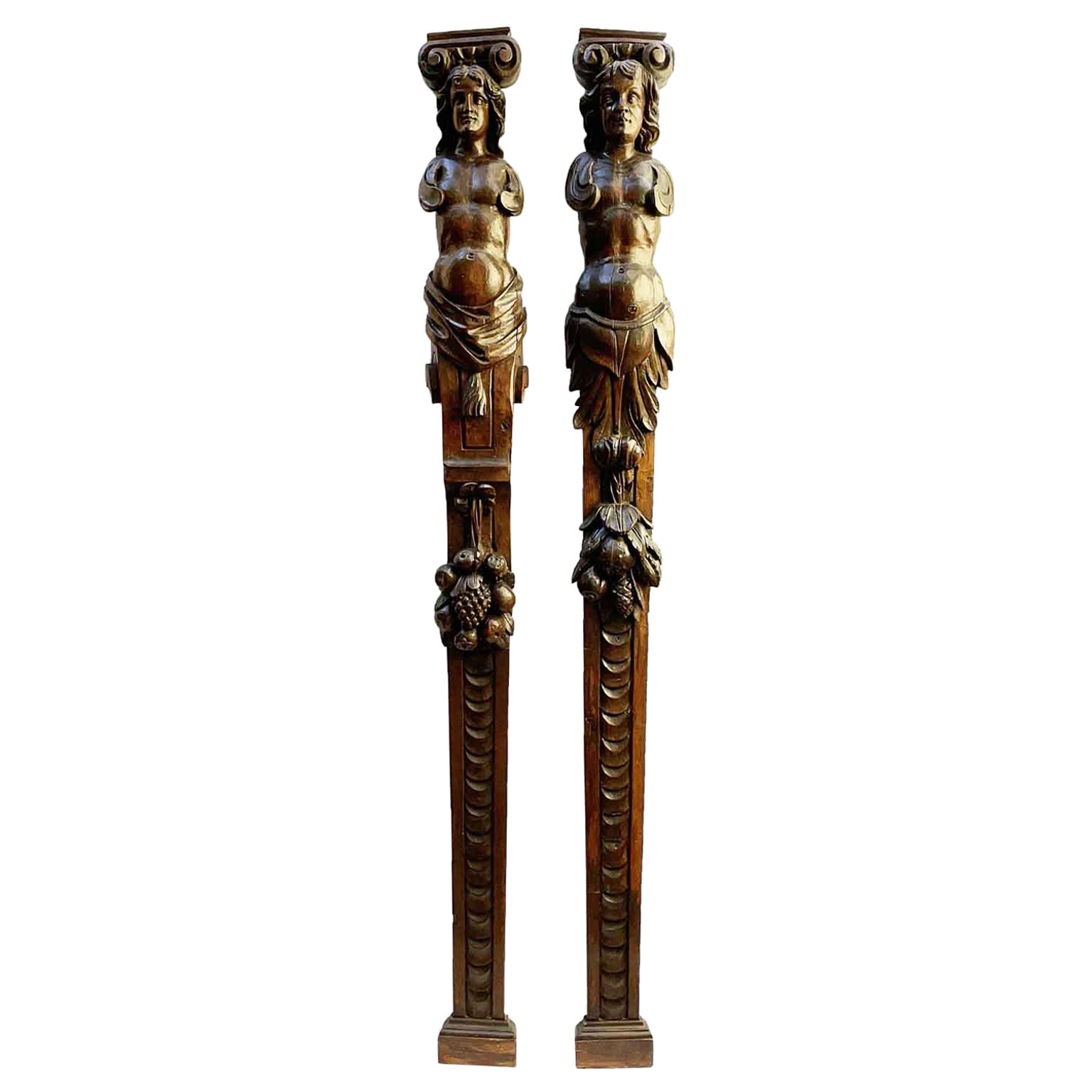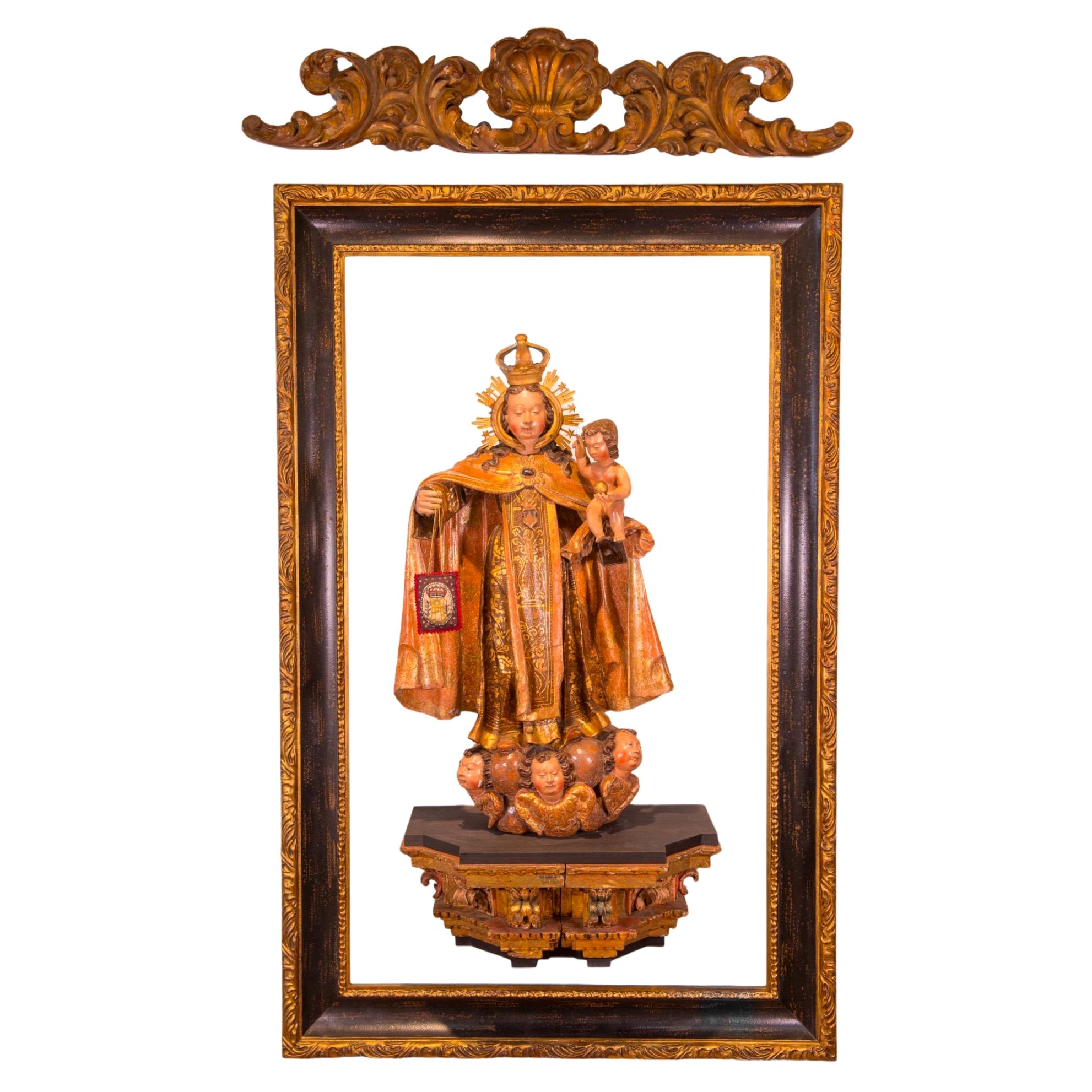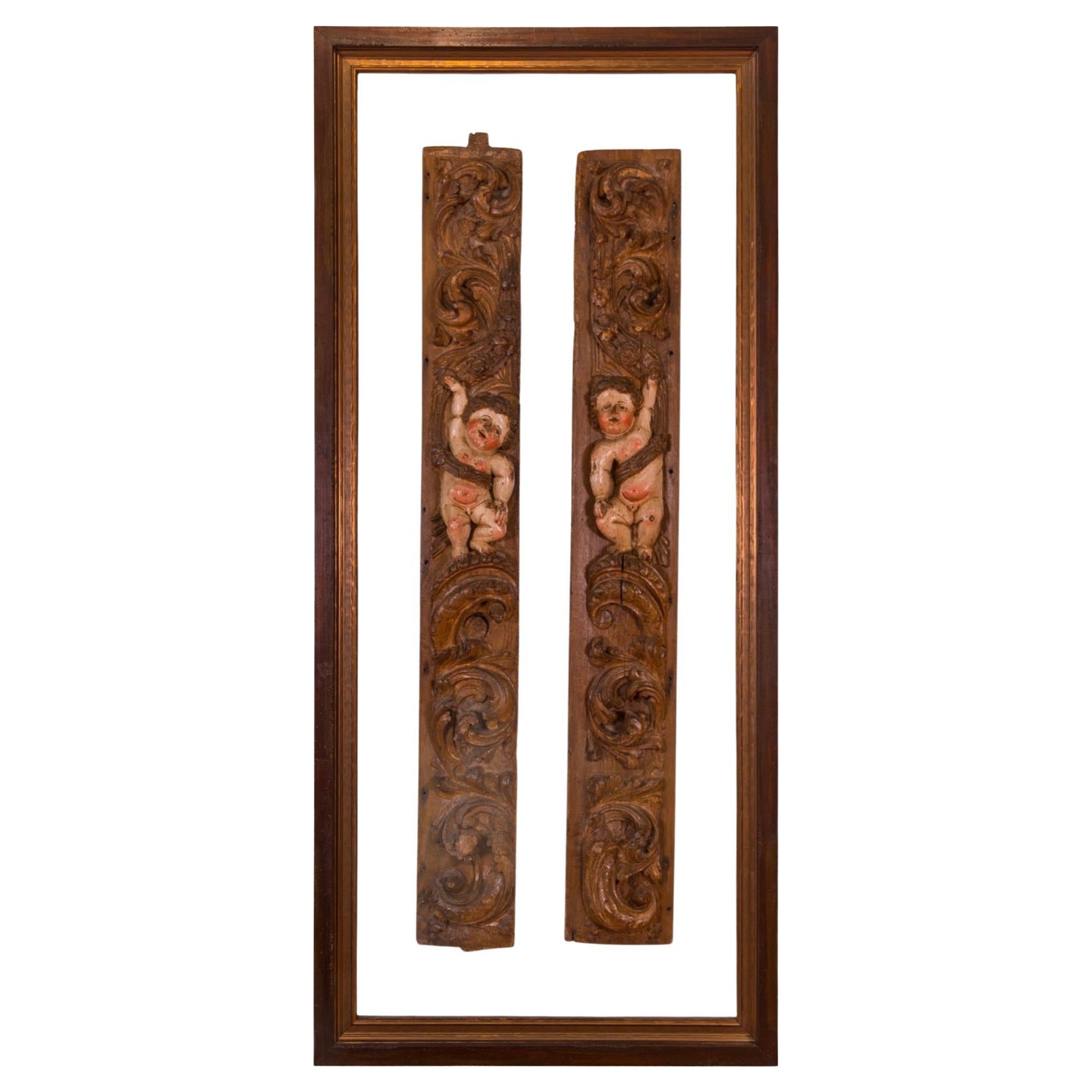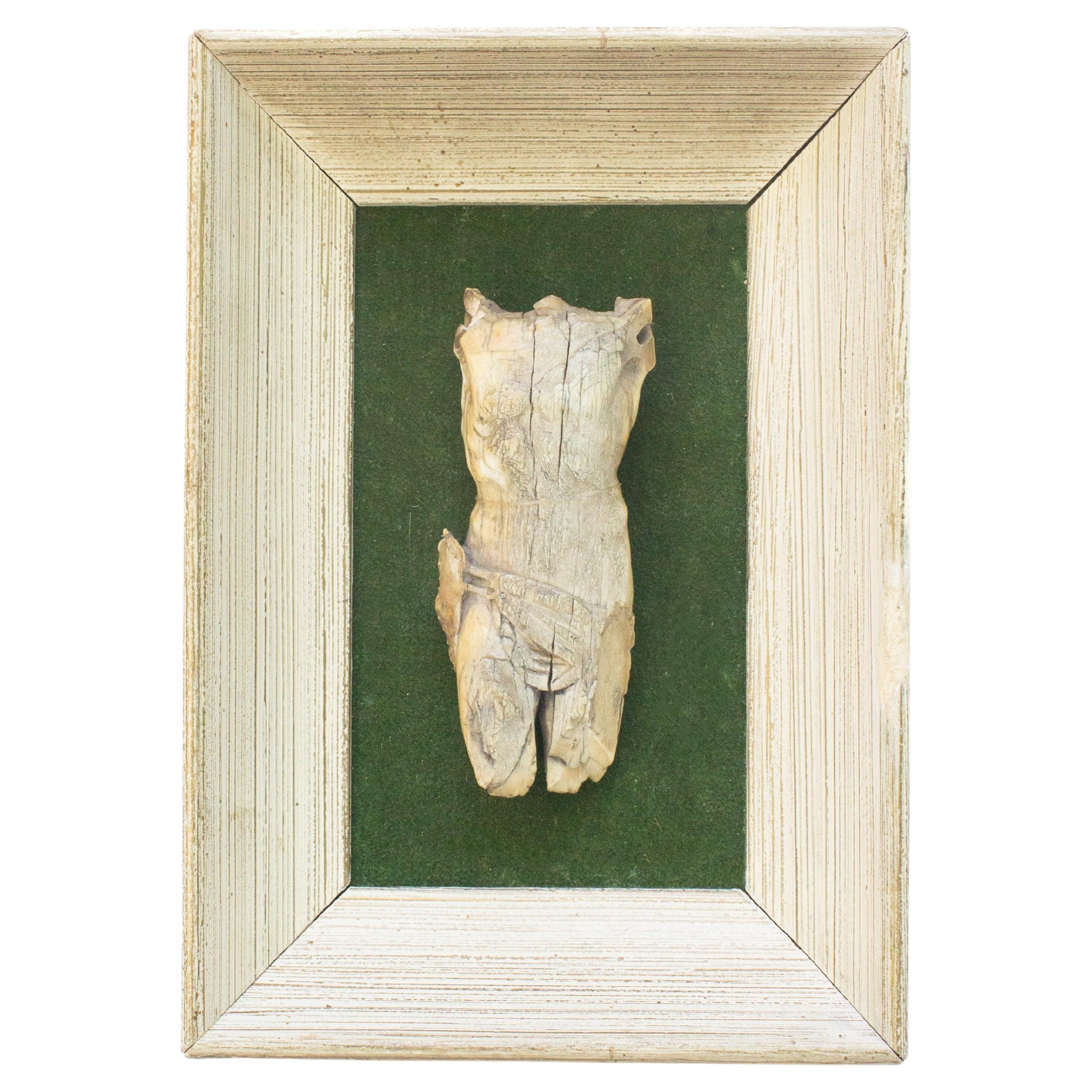Items Similar to Massacre of the Innocents, Normandy, Late 16th Century
Want more images or videos?
Request additional images or videos from the seller
1 of 7
Massacre of the Innocents, Normandy, Late 16th Century
About the Item
The Massacre of the Innocents
Carved oak panel
Normandy, late 16th century
(Collection labels on the back)
Measures: 43,5 x 61 cm.
- Dimensions:Height: 17.13 in (43.5 cm)Width: 24.02 in (61 cm)Depth: 1.97 in (5 cm)
- Style:Renaissance (Of the Period)
- Materials and Techniques:
- Place of Origin:
- Period:
- Date of Manufacture:16th Century
- Condition:Wear consistent with age and use.
- Seller Location:Bruxelles, BE
- Reference Number:1stDibs: LU6666231934232
About the Seller
5.0
Vetted Seller
These experienced sellers undergo a comprehensive evaluation by our team of in-house experts.
1stDibs seller since 2022
6 sales on 1stDibs
Typical response time: 7 hours
- ShippingRetrieving quote...Ships From: Bruxelles, Belgium
- Return PolicyA return for this item may be initiated within 3 days of delivery.
More From This SellerView All
- Adoration of the Magi, Flanders, 17th CenturyLocated in Bruxelles, BEThe Adoration of the Magi. Panel carved in high relief. Flanders, 17th century. Measures: 53 x 32,5 cm.Category
Antique 17th Century Dutch Renaissance Figurative Sculptures
MaterialsWood
- Group of Altarpiece - Antwerpen, 16th centuryLocated in Bruxelles, BEGroup of altarpiece representing the life of a Saint, Saint Renualde? Engraved by the sign of Antwerp hand on the hat of the central character Carved oak, traces of polychromy Fir...Category
Antique 16th Century Belgian Renaissance Figurative Sculptures
MaterialsOak
- Griffin Head, Italy, 16th CenturyLocated in Bruxelles, BEGriffin head Italy, 16th century On a modern metal stand Measures: 20 x 29 x 21 cm (without the stand) The griffin is a legendary creature with the body of a lion, the head an...Category
Antique 16th Century Italian Renaissance Animal Sculptures
MaterialsMarble
- renaissance wooden candelabrum and painted cross - Umbria, 16th centuryLocated in Bruxelles, BEBase of a carved wooden candelabrum, polychrome and gilded; cross painted on both sides. Umbria or Tuscany, 16th century 136 x 43,5 x 30 cm (The cross and the base of the candelabrum were later assembled) The base of the candelabrum is intricately carved and adorned with polychrome and gilded finishes. The shafts take on the shape of balusters reminiscent of ancient columns, feature ornate foliage decorations, garlands and winged cherub faces. The feet are crafted in the likeness of lion paws. The base is further embellished with depictions of four saint martyrs, among them Saint Barbara and Saint Catherine of Alexandria. The plasticity of the figures, outlined with strong contour lines, the clear and vibrant colors, are stylistic elements linked to the Umbrian tradition of the sixteenth century.The precisely defined and elegant drawing, along with the clear color palette applied with refined chiaroscuro modulations, became the signature of a style that would leave a lasting mark on the era to come. This is exemplified by a preference for vibrant, multicolored images, accentuated in this case by the use of red and pink in the saint's attire. A notable addition, introduced later, is a polylobed cross painted on both sides. On one side, the Crucifixion is vividly portrayed:The treatment of the corpus itself is in line with High Medieval practice, emphasizing pathos by showing Jesus dead, his arms sagging from the weight of the body. The upper section displaying a pelican pecks at her breast to feed her young with her own blood; a symbol of the sacrifice of Christ on the cross whose body and blood similarly nourishes the celebrant during Mass. The lower part depicts Golgotha. On the reverse side, the Resurrection is artistically presented in a Renaissance iconography, reminiscent of the renowned composition painted by Piero della Francesca, now housed in the Civic Museum of Sansepolcro. In terms of composition, with the frontal depiction of Christ holding the banner, this motif became particularly widespread in central Italy, spanning from Tuscany to Umbria throughout the 16th century.. The double-sided construction suggests that it may also have been carried in liturgical processions. In Umbria from the 14th century, the use of portable crosses painted on both sides had become a widespread practice, aimed at satisfying the monastic clientele that had significantly increased following the establishment of new religious communities. The earliest surviving Tuscan painted crucifix represent Christ as Christus Triumphans, or the “Triumphant Christ” with his head up and eyes open. This form was supplanted in the 13th century with the Christus Patiens, or “Suffering Christ” type who is shown often with his head fallen on his shoulder and his eyes closed, as In our cross. The iconography of the suffering Christ appears to have developed out of a new interest in Christ’s human nature, the development of the feast of Corpus Christi and with increased importance given to the Eucharist. The process of humanizing the figure of Christ reaches its peak with the abandonment of all the previous expressive conventions in favor of more realistic details we can observe in this Crucifix, such as the swollen belly, the arms stretched to the limit of muscle tearing, the body falling heavily forward, the abundant blood on the wounds, and the cross firmly embedded in the rock of Calvary. It's worth noting that Renaissance candelabra...Category
Antique 16th Century Italian Renaissance Figurative Sculptures
MaterialsWood, Giltwood
- 16th century Brussels tapestry - The Story of DavidLocated in Bruxelles, BE16th century Brussels tapestry The Story of David Brabant, 16th Century Monogram at the bottom left. 320 x 250 cm This splendid Brussels tapestry, crafted from wool and silk during ...Category
Antique 16th Century Belgian Renaissance Tapestries
MaterialsWool, Silk
- Attributed to Domenico di Paris - Madonna and The Child, 15th centuryLocated in Bruxelles, BEAttributed to Domenico di Paris, also called Domenico del Cavallo ( Monselice, documented in Ferrara between 1442 and 1501) Madonna and The Child Polychromed and gilded Stucco 47,5 ...Category
Antique 15th Century and Earlier Italian Renaissance Wall-mounted Sculpt...
MaterialsStucco
You May Also Like
- 16th Century Head Of A NobleLocated in Atlanta, GAA very striking 16th century statue - head of a nobleman - crafted from Roman concrete - opus caementicium. Roman concrete is durable due to its incorporation of volcanic ash, which...Category
Antique 16th Century Italian Figurative Sculptures
MaterialsCoade Stone
- 16th Century Renaissance Pair of Italian Wall Sculptures Caryatids OversizedLocated in Milan, ITUnique pair of Italian hand-carved caryatids, dating back to 1500 circa, almost 83 inches 210cm high, this antique pair of dark patina Renaissance sculptures comes from a choral ense...Category
Antique 16th Century Italian Renaissance Wall-mounted Sculptures
MaterialsWood, Walnut
- 16th Century Our Lady of Mount Carmel, Gold Gilded and PolychromedLocated in North Miami, FL16th Century Spanish gold gilded and polychromed Carved-wood sculpture of Our Lady of Mount Carmel. She depicts the Blessed Virgin Mary in her...Category
Antique 16th Century Spanish Renaissance Wall-mounted Sculptures
MaterialsGold Leaf
- Omnipresence of God, 16th Century, Carved Wood PanelLocated in North Miami, FLA pair of 16th Century Spanish altar panels of Cherubs Representing the Omnipresence of God mounted on a Lucite panel with a double frame of hand-carved ...Category
Antique 16th Century Spanish Wall-mounted Sculptures
MaterialsGold Leaf
- Framed 16th Century Italian Ivory Figure of ChristBy InteriLocated in Dublin, Dalkey16th century Italian ivory figure of Christ mounted against green felt fabric and framed in a coordinating cream frame. This piece was once originally pa...Category
Antique 16th Century Italian Renaissance Wall-mounted Sculptures
MaterialsWood, Ivory, Felt
- 16th Century, Saint Isidore, Patron of Farming and Gardening, Carved-WoodLocated in North Miami, FL16th Century Spanish carved-wood and polychromed sculpture and altar of Saint Isidore, Patron of Farming and Gardening. He is standing in a red velvet line niche. The altar is adorne...Category
Antique 16th Century Spanish Renaissance Wall-mounted Sculptures
MaterialsGold Leaf
Recently Viewed
View AllMore Ways To Browse
Carved Renaissance 16th
Normandy Oak
16th France Renaissance
16th Century French Renaissance
16th Century Carved Panel
16th Century Oak Panel
Massacre Of The Innocents
Buck Head Wall Mount
Beatrice Serre
C Jere Bicycles
C Jere Maple
C Jere Fan
Vintage Bottle Opener Wall Mount
Vintage Bottle Openers Wall Mount
Vintage Wall Mounted Bottle Openers
Vintage Wall Mounted Bottle Opener
Brass Golden Gate Bridge
Bowie Wall Nail Art





